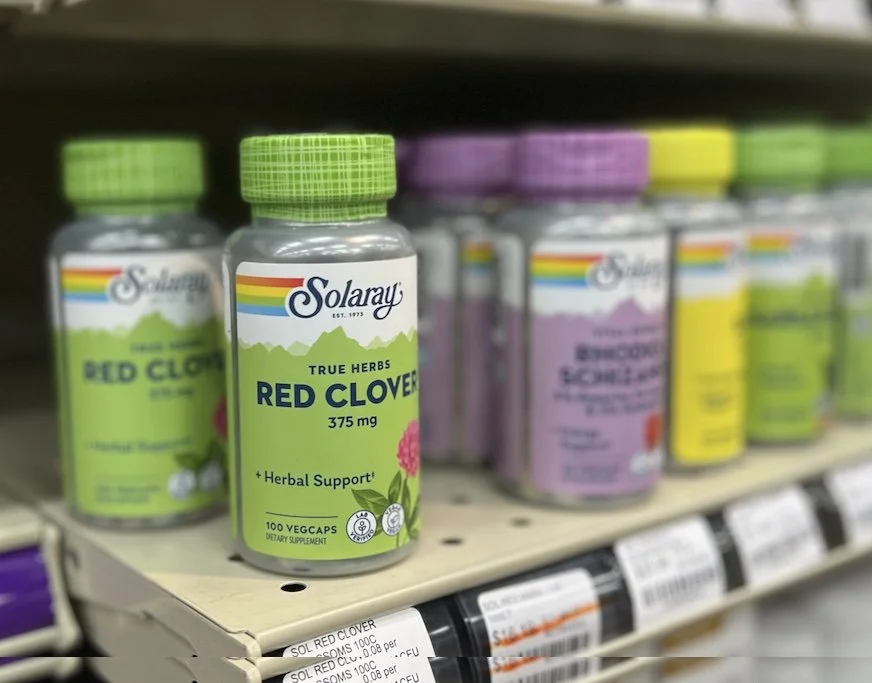The Power of Red Clover
Among the many herbs I recommend to patients, there are a few powerful ones that stand out. Red clover is one of them, even though it’s quite likely you’ve never heard of it!
Known in Traditional Chinese Medicine as hóng yùn cǎo, red clover has been used for centuries for its cooling and detoxifying properties, to support liver function, to balance the body’s internal environment and to promote overall well-being. When taken as a tea, it has a sweet and slightly salty flavor.
But we’re going to talk about two of red clovers biggest benefits: cancer prevention and hormone regulation. Red clover is a simple, easy addition to your wellness routine that can help your body find the balance it needs. First, an important note that red clover can interact with some medications, so be sure you check with your acupuncturist ahead of time. People who are allergic to aspirin also should not take red clover.
Red Clover for Cancer Prevention
One of red clover’s most promising uses is its role in cancer prevention, and several studies have shown that its isoflavones—plant-based compounds that mimic the effects of estrogen—can inhibit the growth of cancer cells. Specifically, red clover is beneficial against hormone-related illnesses like breast and prostate cancer. In Traditional Chinese Medicine, isoflavones are believed to help restore balance and harmony in the body, addressing the root causes of diseases.
Red Clover for Hormone Regulation
Hormonal imbalances can manifest in a variety of ways, from irregular menstrual cycles to menopausal symptoms. In Traditional Chinese Medicine, these imbalances are often seen as disruptions to the body's yin and yang. In these cases, red clover is a natural way to rebalance hormones and calm related symptoms. It’s especially beneficial for women in menopause by helping alleviate things like hot flashes, night sweats and mood swings.
Other Uses
While hormone regulation and cancer prevention are red clover’s powerhouse uses, it’s also a great herb for cardiovascular health and shows potential in increasing HDL—your “good” cholesterol. Several studies also show promising use of red clover in slowing osteoporosis, and it may even boost bone density. And finally, red clover ointments can be used to treat psoriasis, eczema and other rashes.
Adding Red Clover to Your Diet
The great news is, adding red clover to your diet is pretty simple. It’s available online and in most health-food stores as a tea or supplement, and it can be eaten as a fresh herb. Here are five ways to add red clover to your day.
As a dried herb (tea): Steep 1-2tsp dried red clover flowers or flowering tops in 8 ounces of hot water for half an hour. It can be difficult to find prepackaged red clover tea in stores, but it can easily be purchased online. Drink up to 2-3 cups daily.
As a supplement: Although most capsules come in much higher doses, I recommend starting with an initial dose of no more than 200mg per day of powdered red clover or up to 85mg of red clover isoflavones, so try to look for the lowest dose possible.
As a tincture: While many tinctures are applied under the tongue, red clover’s dose is 60-100 drops per day—high enough that I recommend adding it to hot water. One dropper holds about 30 drops, so you’re looking to add 2-3 full squeezes, up to three times a day.
As a topical cream or lotion: Red clover ointments that contain 10%-15% flower heads can be applied as needed for eczema or psoriasis. Be sure to avoid any open wounds and stop if irritation develops.
As a food: While it might be a little harder to come by, you can eat red clover as both a fresh and dried herb. Red clover can be added to salads, dough, soups, smoothies, butter, flower salt or sugar, and as a dessert garnish—just to name a few. Have fun with it!
I often recommend a sixth option for people looking to add herbs to their diet. Herbal infusions are similar to a tea in that you drink them, but they’re prepared very differently (and don’t contain any actual tea). Infusions are a large amount of an herb brewed for a long time, like overnight, and they’re a very effective way of ingesting herbs. Unlike the five DIY options above, they’re something we create for you together during your appointment, carefully choosing the right plants.
In health and wellness,
Julie

